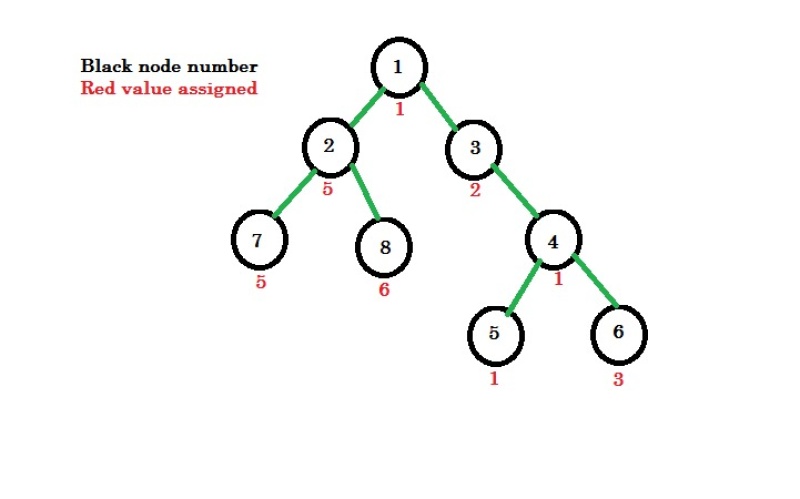H. Roy and Tree Permutation
Time Limit: 2.0 s
Memory Limit: 256.0 MB
Description
You are given a tree with N nodes. Each node in the tree has an assigned value from the array A. The tree is rooted at node 1, and the tree is undirected and connected.
There are Q queries. For each query, you are asked to find the minimum number of changes required to make the values in the subtree rooted at a given node x a valid permutation. A valid permutation of size S is a sequence that contains all integers from 1 to S, exactly once.
For example,
[2,3,1], [4 ,3 ,2, 5, 1] are valid permutation, where [2,4,1], [1,1,2,3] are not.
The subtree rooted at a node x includes the node x itself and all its descendants.
Input
- The first line contains an interger T ( 1 ≤ T ≤ 5000), the number of test case.
In each test case following line contains, - The first line contains an integer N (1 ≤ N ≤ \(10^5\)) — the number of nodes in the tree.
- The second line contains an array A of length N, where A[i] (1 ≤ A[i] ≤ N) represents the value assigned to node i.
- The next N-1 lines describe the tree using N-1 edges. Each edge connects two nodes u and v (1 ≤ u,v ≤ N), meaning there is an edge between nodes u and v.
- The third line contains an integer Q (1 ≤ Q ≤ \(10^5\)) — the number of queries.
- The next line contains Q integer, x (1 ≤ x ≤ N) — the node for which the query is being made.
Sum of N overall test case dosen't exist \(10^5\).
Sum of Q overall test case doesn't exist \(10^5\).
Graph is a tree.
Output
For each query, output a single integer: the minimum number of changes needed to make the values in the subtree rooted at node x a valid permutation of the numbers 1, 2, ..., S, where S is the size of the subtree rooted at node x.
Sample
| Input | Output |
|---|---|
|
|
1st test case :

1st query : node x = 4,
node 4 has subtree, [4,5,6].
assingned value, [1,1,3].
total number of node this subtree is 3, we need to make permutation of length 3.
if we change 1st position value, [2,1,3], which is a 3 length permuation.
So only one change is requried, answer is 1.
Information
- ID
- 1157
- Difficulty
- 8
- Category
- Graph_Theory | Data_Structure Click to Show
- Tags
- # Submissions
- 75
- Accepted
- 12
- Accepted Ratio
- 16%
- Uploaded By
Related
In following contests: